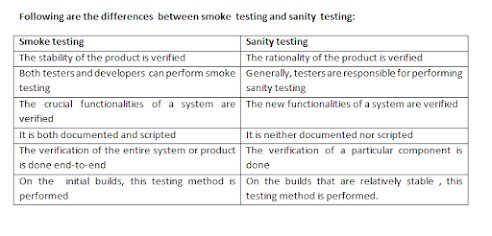Smoke Testing vs Sanity Testing Explained
What is smoke testing?
Once the software build has been developed, the smoke testing process takes place and if there are any issues then they are fixed. This testing method makes sure that all the program's core functionalities are working cohesively and smoothly.
Specific errors are eliminated in the software development process, which, in turn, helps in carrying out the software testing process more efficiently.
Integration related issues are detected and thus specific insights are provided in the early stages of the software development activities. Smoke testing can be conducted in both manual and automated mode.
What is sanity testing?
Whenever new modules are being added to the existing software build, sanity testing is conducted to verify whether the build is still working as expected and whether it can be passed on to further levels of testing. Sanity testing is considered to be a subset of regression testing and hence the quality of regressions that has been worked upon on the software is properly evaluated.
When the code goes through minor changes, the build goes through end-to-end testing to know whether it is still performing flawlessly or not. Once the smoke test has been cleared, then after sanity tests are taken into consideration. The application's functionality is properly validated using this testing method.
Following are the differences between smoke testing and sanity testing:


Comments
Post a Comment